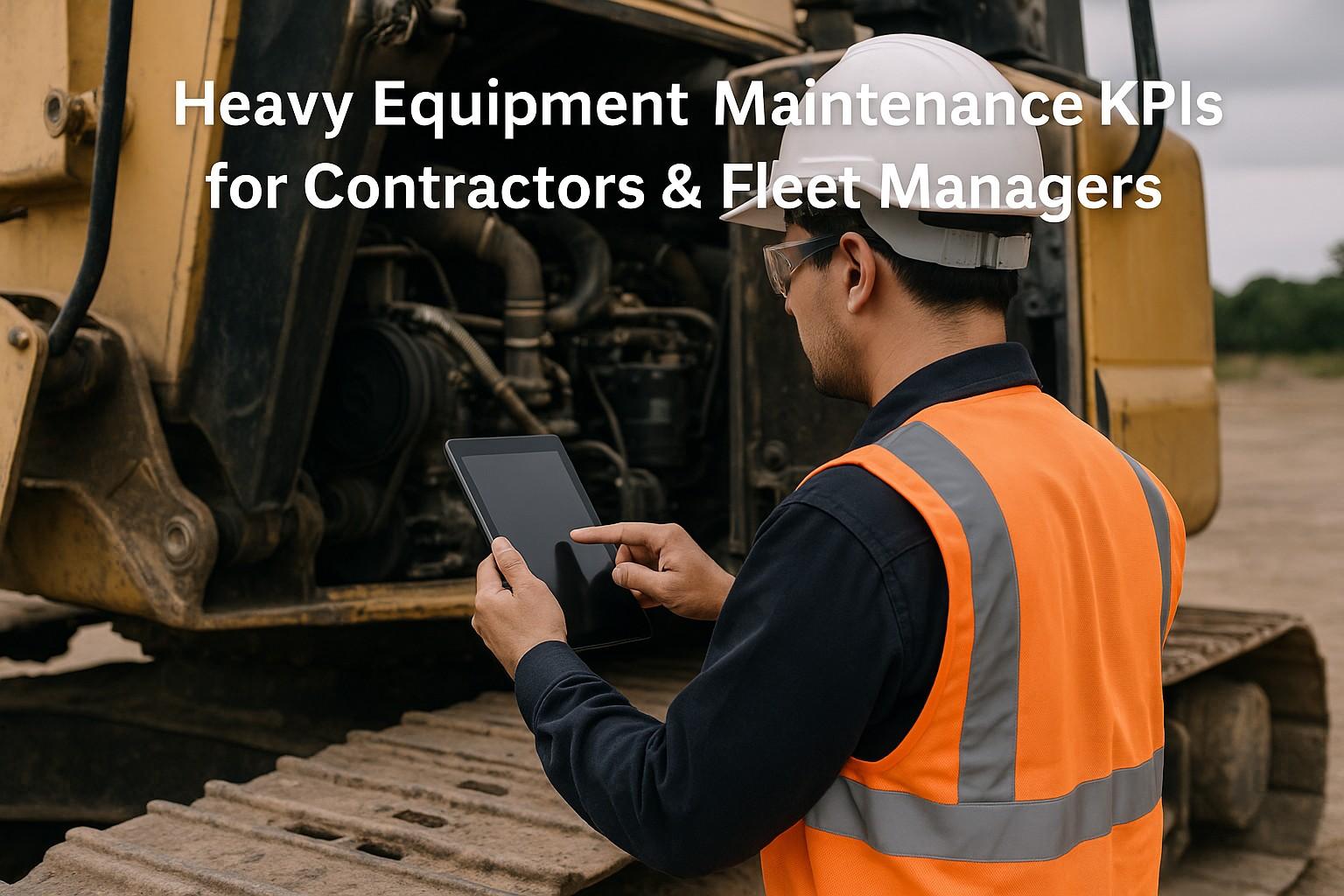The evolution of fuel sensors represents one of the most significant technological transformations in construction fleet management, with modern digital solutions delivering 40% better accuracy than traditional float arm systems while reducing fuel-related operational costs by $45,000 annually per fleet. From the mechanical float systems of the 1950s to today's ultrasonic and capacitive technologies, fuel level measurement has transformed from reactive guesswork into predictive fleet intelligence that drives strategic decision-making and operational excellence.
Today's advanced fuel monitoring systems achieve 99.5% measurement accuracy while providing real-time theft detection, consumption analytics, and predictive maintenance insights that were impossible with analog technologies. This technological evolution has revolutionized fleet management, enabling construction companies to optimize fuel efficiency, prevent theft losses averaging $18,000 per machine annually, and maintain competitive advantages through data-driven operational strategies.
Fuel Technology Evolution Impact
Ready to Upgrade Your Fuel Monitoring Technology?
Discover how modern fuel sensors can transform your fleet management operations and deliver significant cost savings.
The Historical Journey: From Mechanical to Digital Fuel Measurement
The evolution of fuel sensors spans over seven decades, beginning with basic mechanical float systems in the 1950s and progressing to today's sophisticated digital monitoring platforms. This technological advancement represents more than incremental improvement—it constitutes a fundamental transformation in how construction fleets monitor, analyze, and optimize fuel consumption across diverse operational environments.
Understanding this evolution provides critical insights into why modern fuel monitoring technologies deliver superior performance, enhanced reliability, and unprecedented operational visibility compared to traditional analog systems that dominated the industry for decades.
Comparative Analysis: Analog vs. Digital Fuel Monitoring Technologies
The technological gap between traditional float arm sensors and modern digital monitoring systems represents a paradigm shift in measurement accuracy, operational reliability, and data intelligence capabilities. This comparison reveals why construction fleets are rapidly transitioning to digital solutions for competitive advantage and operational excellence.
Digital fuel monitoring technologies deliver superior performance across all critical metrics while providing advanced features that enable predictive maintenance, theft prevention, and strategic fuel management previously impossible with analog systems.
- ✗ Measurement accuracy ranging from 10-20% variance due to mechanical wear and calibration drift
- ✗ Vulnerable to fuel contamination, debris interference, and mechanical component failure
- ✗ No real-time theft detection or rapid fuel loss alert capabilities
- ✗ Limited diagnostic data and no consumption pattern analysis
- ✗ Requires frequent calibration and maintenance to maintain minimal accuracy
- ✗ Incompatible with advanced fleet management and analytics platforms
- ✓ Measurement accuracy within 1-2% variance through non-contact ultrasonic or capacitive technology
- ✓ No mechanical components to wear, break, or require maintenance over 10+ year lifespan
- ✓ Real-time theft detection with instant alerts for rapid fuel loss events
- ✓ Comprehensive consumption analytics enabling predictive maintenance and efficiency optimization
- ✓ Self-calibrating systems with automatic temperature and environmental compensation
- ✓ Seamless integration with IoT platforms, fleet management systems, and business intelligence tools
Revolutionary Digital Technologies Transforming Fuel Monitoring
The current generation of digital fuel monitoring technologies represents breakthrough innovations that address fundamental limitations of mechanical systems while introducing capabilities that transform fuel management from cost center to strategic advantage. These technologies enable construction fleets to achieve unprecedented operational efficiency and competitive positioning.
Understanding these technological capabilities is essential for construction managers evaluating fuel monitoring upgrades that deliver immediate cost savings while positioning fleets for future operational excellence and regulatory compliance requirements.
- ✓ Non-contact measurement using ultrasonic waves with 99.5% accuracy across all fuel types
- ✓ Automatic temperature compensation ensuring consistent readings in extreme weather conditions
- ✓ Real-time measurement updates every 30 seconds enabling immediate theft detection
- ✓ No fuel contamination risks or sensor fouling issues affecting long-term performance
- ✓ Compatible with irregular tank shapes and multiple fuel types without recalibration
- ✓ Wireless data transmission capabilities reducing installation complexity and maintenance requirements
- ✓ Probe-based measurement through dielectric constant analysis achieving sub-1% accuracy
- ✓ Simultaneous fuel level and water contamination detection protecting engine systems
- ✓ Minimal moving parts with solid-state electronics ensuring 15+ year operational life
- ✓ Advanced signal processing eliminating interference from vibration and electrical noise
- ✓ Integrated diagnostics providing system health monitoring and predictive maintenance alerts
- ✓ Explosion-proof certifications meeting OSHA and EPA safety requirements for hazardous environments
Implementation Strategy: Transitioning from Legacy to Digital Systems
Successful transition from analog to digital fuel monitoring requires strategic planning that minimizes operational disruption while maximizing immediate benefits from advanced monitoring capabilities. The recommended implementation approach spans 6-12 months with priority given to high-value equipment and theft-prone locations.
Investment in digital fuel monitoring technology provides immediate returns through improved accuracy and theft prevention while positioning fleets for future operational optimization and regulatory compliance requirements that increasingly demand real-time environmental monitoring.
- ✓ Current system audit and fuel loss analysis with $8,000-12,000 baseline assessment investment
- ✓ Pilot program with 3-5 high-value machines using $15,000-25,000 sensor deployment
- ✓ Performance baseline establishment and ROI measurement framework development
- ✓ Staff training on digital monitoring platforms and alert response procedures
- ✓ Integration testing with existing fleet management and telematics systems
- ✓ Theft prevention protocol development and emergency response procedure establishment
- ✓ Complete fleet sensor installation with $35,000-65,000 investment based on fleet size
- ✓ Advanced analytics platform deployment with predictive maintenance capabilities
- ✓ Integration with fuel management and procurement systems for comprehensive oversight
- ✓ Automated reporting systems for environmental compliance and regulatory documentation
- ✓ Performance optimization based on consumption patterns and operational analytics
- ✓ Advanced theft prevention measures including geofencing and behavioral analytics
Data-Driven Fleet Management: Leveraging Digital Fuel Intelligence
Modern digital fuel monitoring transcends simple level measurement to provide comprehensive fleet intelligence that drives strategic decision-making, operational optimization, and competitive advantage. This data-driven approach transforms fuel management from reactive cost control into proactive business intelligence that impacts profitability and operational excellence.
Advanced analytics capabilities enable construction managers to identify efficiency opportunities, predict maintenance requirements, and optimize equipment utilization based on actual consumption patterns rather than estimates or assumptions that characterize traditional fuel management approaches.
- ✓ Real-time consumption monitoring enabling immediate identification of efficiency anomalies
- ✓ Predictive maintenance alerts based on consumption pattern analysis and performance trending
- ✓ Operator performance assessment through fuel efficiency comparisons and behavioral analysis
- ✓ Equipment optimization recommendations based on workload analysis and consumption efficiency
- ✓ Environmental impact reporting for sustainability initiatives and regulatory compliance
- ✓ Cost allocation and project profitability analysis with accurate fuel consumption attribution
ROI Analysis: Quantifying Digital Fuel Monitoring Investment Returns
Digital fuel monitoring system investments deliver measurable financial returns through multiple value streams that extend beyond direct fuel savings to encompass theft prevention, operational efficiency, and strategic business intelligence. Conservative ROI calculations consistently demonstrate payback periods of 8-18 months with ongoing annual savings significantly exceeding initial investment costs.
Understanding these financial benefits enables informed decision-making regarding fuel monitoring upgrades while establishing performance metrics that validate investment effectiveness and guide future technology adoption strategies.
- ✓ Theft prevention savings averaging $15,000-25,000 annually per machine through real-time monitoring
- ✓ Measurement accuracy improvements reducing fuel inventory variance by 15-20% annually
- ✓ Operational efficiency gains through consumption optimization delivering 8-12% fuel savings
- ✓ Predictive maintenance cost avoidance preventing $8,000-15,000 in emergency repairs annually
- ✓ Administrative cost reduction through automated reporting and compliance documentation
- ✓ Insurance premium reductions through documented risk management and theft prevention programs
Regulatory Compliance and Environmental Stewardship
Modern fuel monitoring systems support evolving environmental regulations and sustainability requirements through comprehensive documentation capabilities, emission tracking, and consumption optimization that demonstrates environmental stewardship and regulatory compliance. These capabilities become increasingly important as EPA and OSHA standards continue evolving toward enhanced environmental protection requirements.
Digital monitoring platforms provide automated compliance reporting and audit trail capabilities that reduce administrative burden while ensuring consistent adherence to environmental regulations and safety standards that govern construction equipment operations across diverse project environments.
- ✓ Automated EPA emission reporting based on actual fuel consumption data rather than estimates
- ✓ OSHA safety compliance through contamination detection and hazard prevention capabilities
- ✓ Sustainability reporting supporting corporate environmental responsibility initiatives
- ✓ Audit trail documentation for regulatory inspections and compliance verification
- ✓ Spill prevention and leak detection supporting environmental protection requirements
- ✓ Carbon footprint tracking enabling emission reduction strategies and reporting
Future Trends: Next-Generation Fuel Monitoring Technologies
The evolution of fuel sensors continues advancing with emerging technologies that promise enhanced accuracy, expanded capabilities, and deeper integration with fleet management ecosystems. Understanding these trends enables strategic planning for technology adoption that positions construction fleets for competitive advantage and operational excellence.
Investment in current digital monitoring technologies provides foundation capabilities while ensuring compatibility with future innovations that will further enhance fuel management effectiveness and business intelligence capabilities across diverse operational environments.
Maximizing Competitive Advantage Through Advanced Fuel Monitoring
The evolution from analog to digital fuel monitoring represents more than technological advancement—it constitutes a strategic transformation that enables construction fleets to achieve operational excellence, cost optimization, and competitive positioning previously impossible with traditional systems. Modern digital technologies deliver immediate financial returns while establishing foundation capabilities for future innovation and growth.
Construction companies that embrace advanced fuel monitoring technologies achieve measurable improvements in operational efficiency, cost control, and strategic intelligence that directly impact profitability and competitive positioning. Conservative estimates suggest total ROI exceeding 300% within three years of full implementation, with immediate benefits visible within the first operating quarter following deployment.
The transition from legacy fuel monitoring systems to modern digital platforms represents essential infrastructure investment that positions construction fleets for sustainable competitive advantage, regulatory compliance, and operational optimization in an increasingly demanding market environment.
Transform Your Fuel Monitoring Technology Today
Upgrade from outdated analog systems to cutting-edge digital fuel monitoring and join industry leaders achieving significant operational improvements.
Book a Demo




